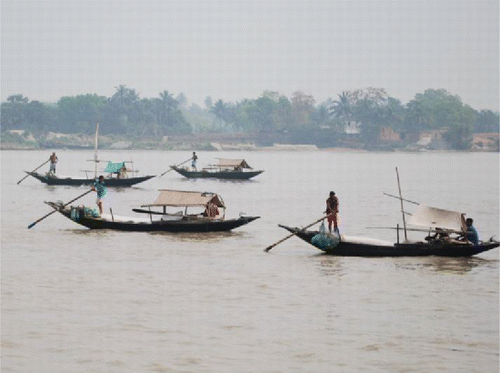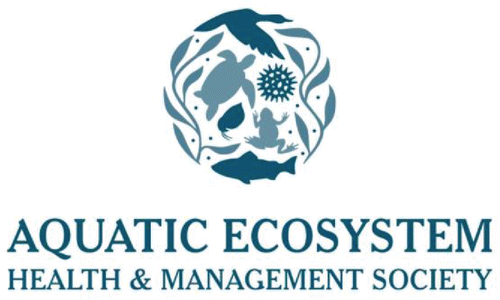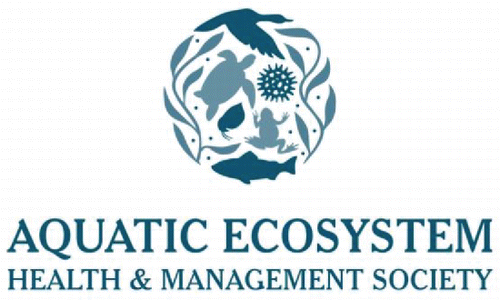The Aquatic Ecosystem Health and Management Society (AEHMS), as part of its global program, has been active in India for almost 15 years, organizing symposia, conferences and publications (AEHMS, Citation2001, Citation2005). The most recent AEHMS activities emerged as a result of the collaboration between the Society and the Central Inland Fisheries Research Institute (CIFRI). A special symposium was organized during the 2008 Indian fisheries forum, which became instrumental in publishing a compendium of five papers on the ecosystem health of the majestic River Ganges (AEHMS, Citation2010). These papers were popular downloads from the publisher's website, which was encouraging. Consequently it was felt that this was an opportune time to make future plans for activities with the advice of Dr. A. P. Sharma, CIFRI's new director, who enthusiastically supported the convening of various workshops and ecoforums at CIFRI.
A great opportunity emerged during the centenary celebrations of the 100th Indian Science Congress in Kolkata in January, 2013. As part of the celebrations, a two-day symposium entitled “Health and fisheries of major river ecosystems of India with emphasis on River Ganga” was convened, with over 40 presentations delivered. Papers from this historical symposium resulted in the publication of a special issue of Aquatic Ecosystem Health & Management devoted to the Ganges, entitled “Ecology of the Mighty Ganges: Health, Fisheries and Management” (AEHMS, Citation2013). The current double special issue includes selected articles on other major rivers of India, which were presented at the same Indian Science Congress.
Amongst the Indian rivers, the Ganges is the largest aquatic ecosystem and has played a key role in the life and vitality of India from time immemorial. In Indian culture, the River Ganges has been considered the most sacred and spiritual river. It occupies a unique position culturally, religiously, and ecologically. It is also called “Mother Ganga” as a sign of utmost respect. The Ganges basin is a cradle of Indian civilization, center of pilgrimage, and host to festivities attended by millions. Ganges water (Gangajal) is not meant merely for human utilities, irrigation, and fisheries, but also for purification from sins and devotion to God according to Hindu beliefs. Its water is believed to possess some unique healing, bactericidal, self-cleansing, and putrefaction resistance properties. Due to its historical, cultural, and economic significance, in 2009 the Government of India declared Ganges to be the “National River of India” and established the National Ganga River Basin Authority (Government of India Citation2009, Citation2010).
The Ganges is a trans-boundary river shared by India and Bangladesh and previously the AEHMS strove to devote two special issues to the ecology and fisheries of the River Ganges (AEHMS, Citation2010, Citation2013), which contained in-depth articles on various aspects.
This special double issue contains some additional manuscripts dealing with the tributaries of Ganges basin, while also attempting to focus on other major rivers of India about which very little is known. The 15 articles cover a variety of topics such as ecosystem health, ecology and community structure, fish diversity, wetlands, and ecological integrity of major Indian rivers. The issue includes articles dealing with historical, cultural, and socioeconomic attributes and is divided into the following three sections:
Ganges River Systems
Peninsular River Systems
Socioeconomics
All articles in this special publication on The Major Rivers of India were peer reviewed, revised, and then meticulously edited by a professional technical editor as per the guidelines of the AEHMS. We are pleased to publish this interesting compendium of papers for the first time on a topic about which very little is known in the global ecological community.
We are grateful to Drs. C. K. Minns (Scientist Emeritus, Fisheries & Oceans Canada) and N. Mandrak (University of Toronto) for their support, advice, and assistance in the detailed reviews of various papers. Thanks are due to more than 35 international referees for the high-quality reviews, constructive criticisms, and revisions, which enhanced the quality of all articles. We sincerely thank Dr. A. P. Sharma, former director of CIFRI, for his continued support of the AEHMS–CIFRI collaborative projects. Thanks are also due to Dr. Dilip Kumar for his encouragement of the project. We appreciate the assistance of Sajina Ali for the local coordination of the project at CIFRI. AEHMS editorial staff deserves much appreciation for their patience in handling the long revision process, especially Jennifer Lorimer and Robin Rozon. We thank Bev Weiler and Susan Blunt for meticulous technical/linguistic editing of the manuscripts which played a significant role in meeting the high standard of peer-reviewed manuscripts for an ISI journal. Finally, our thanks are due to the contributors for their patience and efforts during various phases of manuscript processing, peer review, and multiple revisions.
The AEHMS is very pleased to organize this special issue dedicated to the ecology of major rivers of India. We hope that the colossal effort involved in producing these state-of-the-art papers will go a long way in enhancing the knowledge of young students, as well as researchers and managers working on the conservation and restoration of aquatic resources of India.
References
- AEHMS, 2001. Special Issue: Aquatic Ecosystems of Tropical and Temperate Regions: Health & Management. Aquat. Ecosyst. Health Mgmt. 4(3), 223–282.
- AEHMS, 2005. Special Issue: The Great Himalayas: Ecology, Health and Management. Aquat. Ecosyst. Health Mgmt. 8(3), 221–291.
- AEHMS, 2010. Special Issue: Ecosystem Health of the Majestic River Ganges. Aquat. Ecosyst. Health Mgmt. 13(4), 343–479.
- AEHMS, 2013, Special issue: Ecology of the mighty Ganges: Health, fisheries and management. Aquat. Ecosyst. Health Mgmt. 16(4), 357–473.
- Government of India, 2009. The Gazette of India. No. 328. 20 February, 2009. New Delhi, India.
- Government of India, 2010. River Ganga at a Glance: Identification of Issues and Priority Actions for restoration. Development of GRB EMP Team, IIT Kanpur. Report Code: 001_GBP_IIT_GEN_DAT _01_Ver 1_Dec 2010. MOEF, New Delhi.



